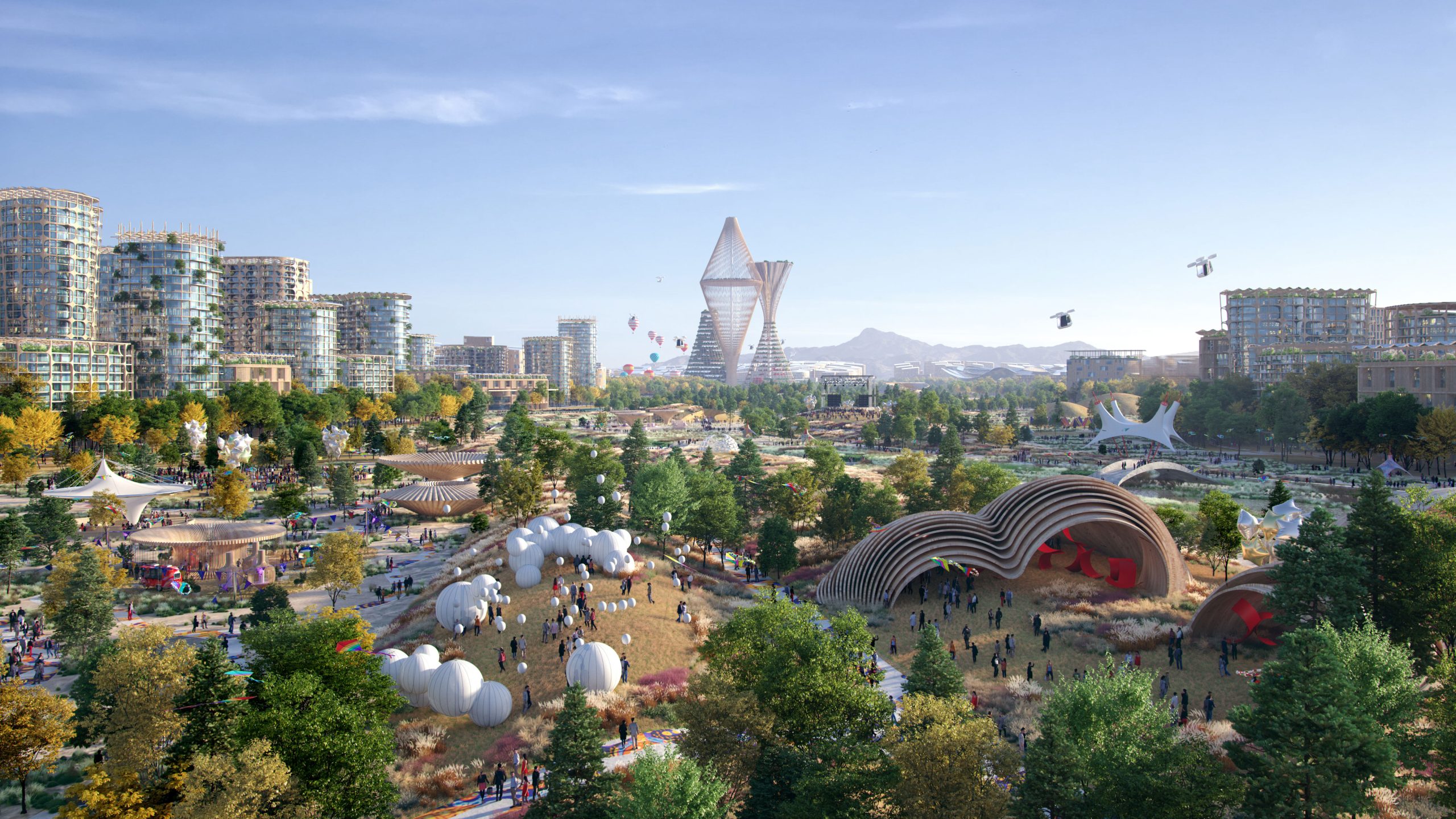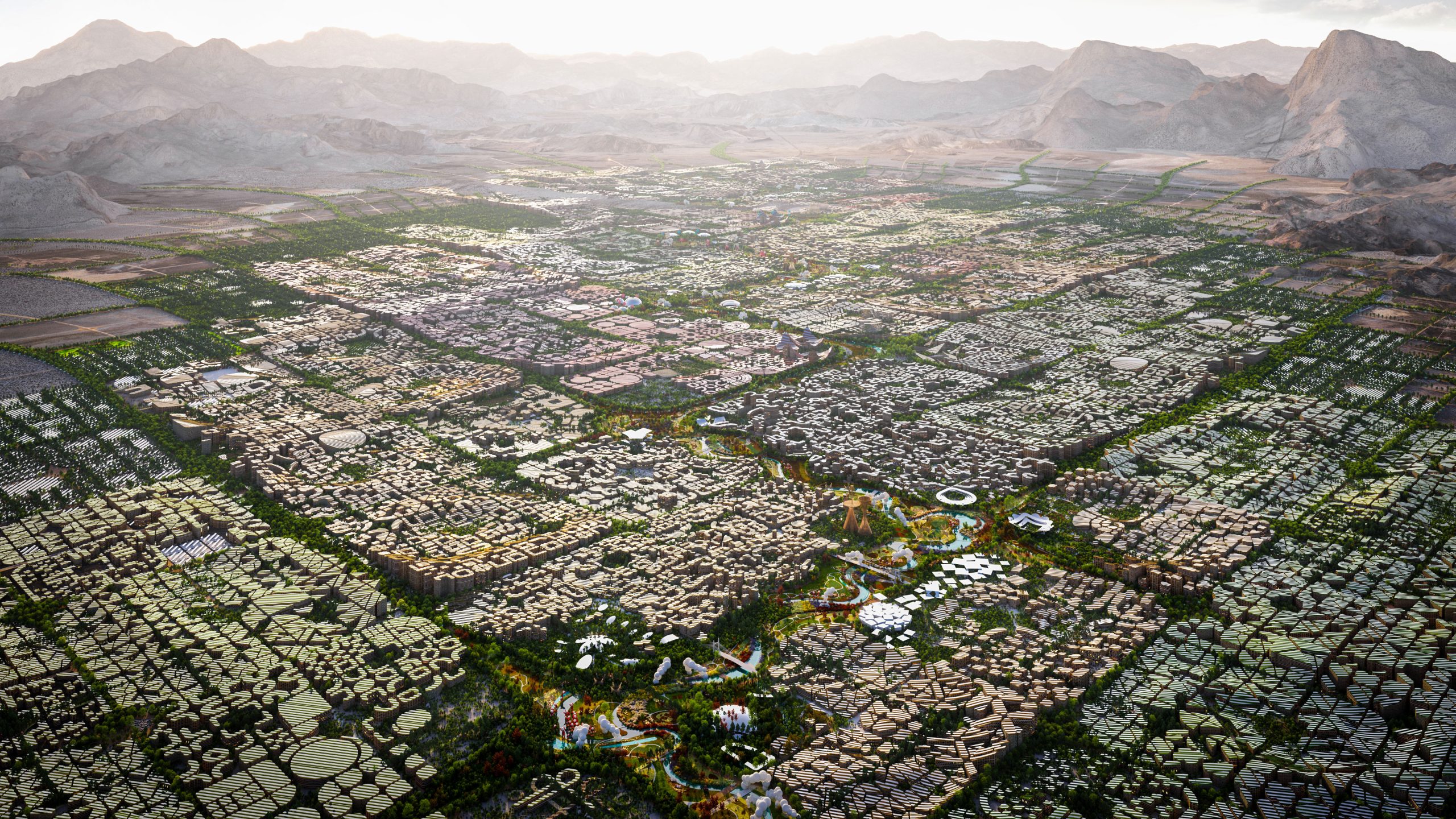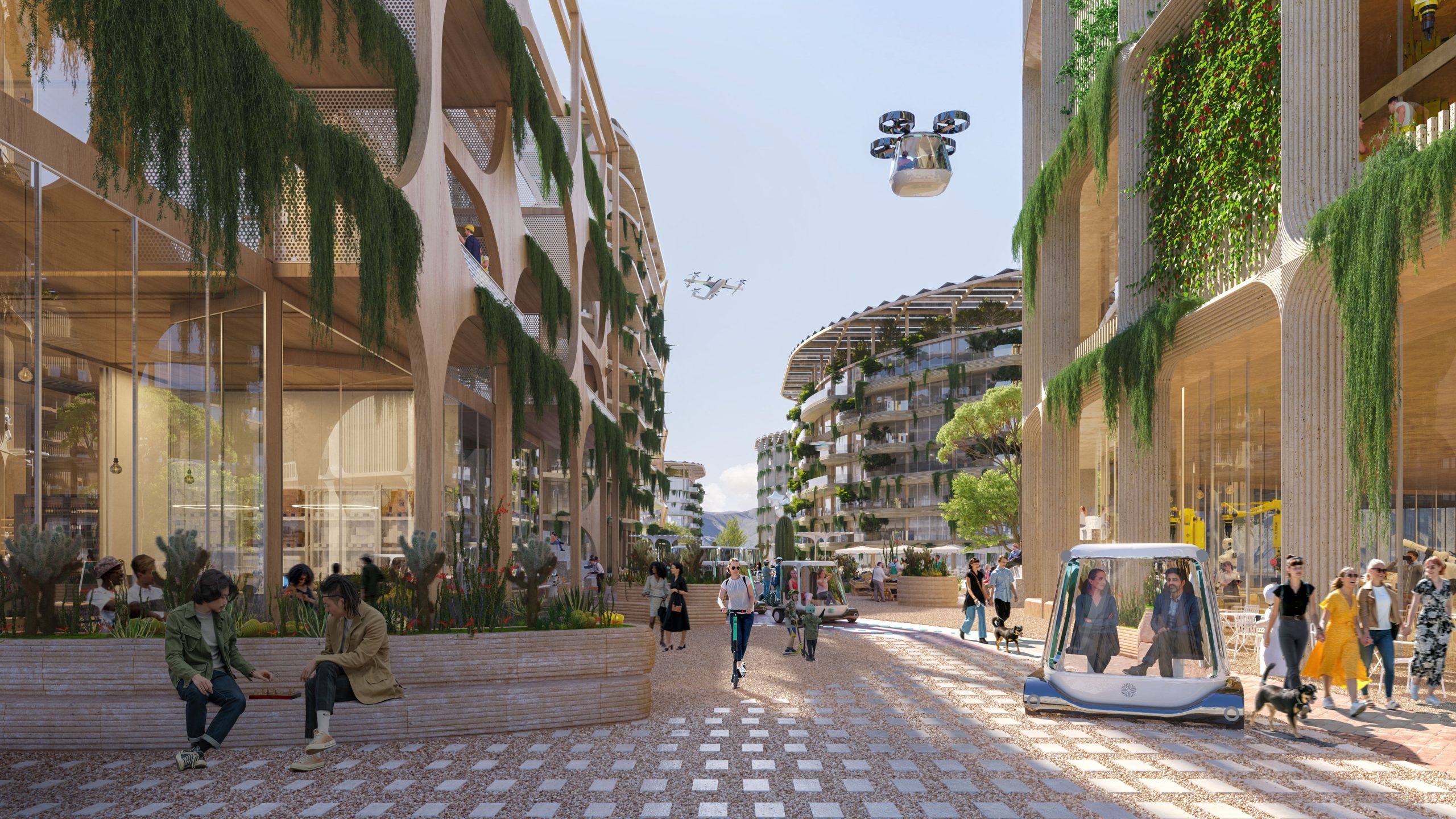Telosa: City of the future?

Billboard
Skyscrapper
Halfpage
The planned city “Telosa” in the USA is one of many examples of planned cities that show what urban life could look like in the future. More about the project of a billionaire – together with the architects of BIG –here.
City of Telosa
Floating cities like Oceanix Busan (South Korea) and elongated cities like The Line (Saudi Arabia) are among the visions for the city of the future. In the USA, too, a futuristic project is now being planned: Telosa City. Billionaire Marc Lore, an entrepreneur who does business with Walmart and Amazon, among others, wants to use part of his fortune for the city of the future. In total, the project is expected to cost about 400 billion US dollars (375 billion euros).
Telosa City is to be built in the middle of the desert between Nevada, Arizona, and Utah. About 150,000 hectares of land are planned. According to Lore, about 50,000 people will live in the city as early as 2030. Interested parties can already register their desire to live in Telosa. The name of the city comes from the Greek and means something like “highest goal”. This refers to both sustainability goals and the diversity of the population.
The new city will run almost exclusively on renewable energy. All buildings will have solar panels. Several water treatment plants will use the resource, which is all the more valuable in the desert, sparingly. At the same time, Telosa City will become a 15-minute city: Residents will find all shops for their daily needs in the immediate vicinity. Cars should not be necessary in Telosa, because the focus is on pedestrians and cyclists. Cars that may be needed should be electric and autonomous.

Sustainability in the 15-minute city
No fossil fuel vehicles will be allowed in Telosa. Instead, the city should be easily manageable on foot or by public transport. Scooters, bicycles and autonomous vehicles are also part of the plan.
The large, central “Equity” skyscraper will become Telosa’s landmark. Among other things, it offers space for water storage, aeroponic farms and a roof with photovoltaic panels.
Together with the architects of BIG and financed by private capital, philanthropy, public loans and subsidies, Telosa will become the “most open, fair and inclusive city in the world”. That’s how Lore describes it on the city’s website. It also says that Telosa will be as social and environmentally friendly as a Scandinavian city and as free and full of opportunities as a US city.
A new society model
Telosa is not only meant to be sustainable and ultra-modern, but also deliberately diverse. To begin with, billionaire Lore is therefore looking for 50,000 “diverse people” to move into Telosa to embody a new model of society. Details of this diversity are not yet known, but it can be assumed that people with a wide range of backgrounds, ages, and abilities are meant.
In addition, “equality” will reign in Telosa. According to the investor, there will be no private owners in this future city. Rather, a foundation would invest the money from leases in social services. Residents of the new city in the desert will be able to directly influence political decisions. Lore got this idea from the economist Henry George, who dreamed of a tax-free, communal form of society as early as the 19th century. However, this has so far only been implemented on a very small scale.
First visualisations and drafts show a very modern city with greened high-rises, landscape parks and walking paths. Numerous greenhouses, solar panels and wind turbines indicate that the desert city will probably be largely self-sufficient.
Up to five million people are expected to live in the utopian city one day. In addition to its avant-garde architecture, Telosa is characterised by communal resources, drought resistance and a very small ecological footprint.

Telosa – Utopia or reality?
Whether Telosa will really become a model for other cities, as Lore would like, remains to be seen. Criticism, for example from a Guardian article, refers among other things to the fact that a billionaire wants to dictate the future here. The question of whether and how a city can function without taxes is also still completely unresolved.
At the latest, the year 2030 will show whether it is possible to build such a large project in the desert. Other futuristic and intelligent cities, such as Masdar City in the United Arab Emirates, fail because few people want to live in a planned city. According to Lore, about 5 million people are expected to live in Telosa City by 2050.
Another criticism is that this is a vanity project. Because instead of building a sustainable city from scratch (and in the desert), it is also possible to substantially improve existing cities with such a large budget. This is not only faster, but also uses fewer resources.
The Danish architectural group Bjarke Ingels was commissioned by Lore to create the master plan for Telosa. So far, it has not been decided exactly where the city will be built. Cheap building land in the deserts of Utah, Idaho, Nevada, Arizona, Texas, and Appalachia could be possible sites.
By the way: Read more about the prototype for Oceanix Busan, the floating city, here.












